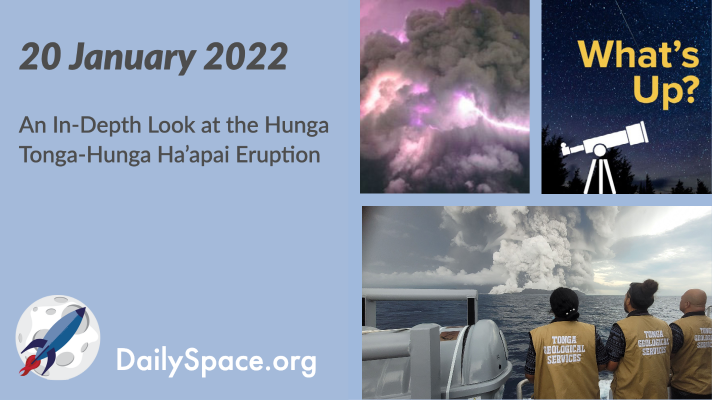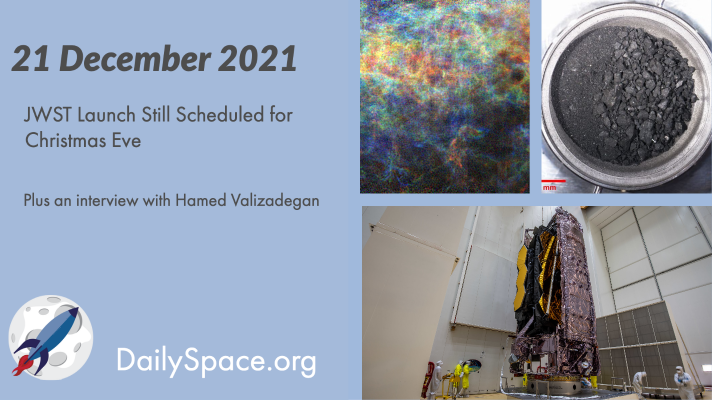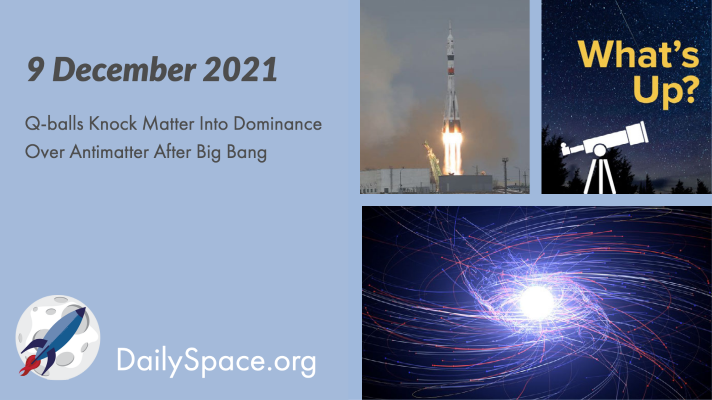
Jan 21, 2022 | Asteroids, Climate Change, Daily Space, Earth, Sky Watching
The Hunga Tonga-Hunga Ha’apai volcano in the Kingdom of Tonga erupted on January 15, and despite communications being cut off, government officials and scientists have gathered a wealth of information about the event and its outcome so far. Plus, urban heat islands, volcanic lightning, and What’s Up.

Dec 22, 2021 | Asteroids, Daily Space, ESA, Guest Interview, JAXA, JWST, Kepler, Milky Way, Neutron Stars / Pulsars, Physics
Dr. Pamela takes a deep dive into her feelings about the JWST, its pending launch, and just what the telescope means to the astronomical community. Plus, general relativity is still true, a huge filament of gas in the Milky Way, and we interview Hamed Valizadegan, project lead for ExoMiner.

Dec 15, 2021 | Active Galaxies, AGU, Asteroids, Daily Space, Exoplanets, Mars, Milky Way, Review, Stars, Supermassive Black Holes
Using the ESO’s Very Large Telescope Interferometer, scientists have obtained the deepest and sharpest images of Sagittarius A*, the black hole at the center of the Milky Way. They tracked the orbits of stars and were able to more precisely measure the mass of the black hole. Plus, new ways to research meteors, and a review of a Peak Design camera anchor system.

Dec 10, 2021 | Asteroids, Cosmology, Crewed Space, Daily Space, Exoplanets, Galaxies, Gemini South, Guest Interview, Rockets, ROSCOSMOS, Sky Watching, Soyuz, Spacecraft, Very Large Array
Researchers hypothesize that blobs in post-Big Bang fields of energy, known as Q-balls, could explain how matter came to dominate over antimatter in our Universe, and they plan to use gravitational waves to find their evidence. Plus, a crewed launch to the ISS features Japanese tourists, NASA selects the latest astronaut class, and What’s Up is the Geminids.

Dec 8, 2021 | Asteroids, Daily Space, Dark Matter, Earth, ESA, Galaxies, JWST, Moon, Spacecraft, The Sun, Very Large Array
Astronomers using the Very Large Array in New Mexico spent 40 hours observing galaxy AGC 114905, which seemed to have little to no dark matter in 2019 observations. The new evidence shows there is no dark matter in the galaxy at all. Plus, more Hubble and JWST updates, an eclipse over Antarctica, and an interview with Dr. Franck Marchis about citizen science.

Dec 6, 2021 | Asteroids, Comets, Cosmology, Daily Space, Earth, Exoplanets, Our Solar System, Review
A Mars-sized planet was found just 31 light-years away, orbiting its star every eight hours and having 55 percent the mass of the Earth, leading scientists to conclude it’s mostly made of an iron-nickel core. Plus, water on Earth, a huge comet, and a review of a Canon lens.








 We record most shows live, on Twitch. Follow us today to get alerts when we go live.
We record most shows live, on Twitch. Follow us today to get alerts when we go live.